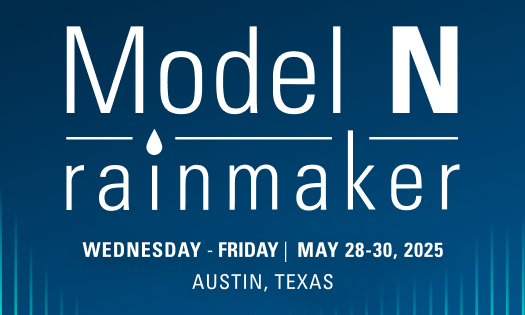You’re probably used to thinking of rebate management as an operational issue – and that automating and getting a better handle on it will result in significant efficiency gains. That’s true, and efficiency is always a good thing for medtech firms to strive for in operations. But it’s also imperative to recognize the considerable financial benefits of streamlining rebate management. Do it right – using the right tools – and you will reduce overpayments and other errors and achieve top-line revenue gains and higher margins.
In this blog, we’ll explain how you can automate your rebate and accrual management processes to improve visibility, eliminate inefficiencies, align rebate programs, and optimize revenue.
Manual processes transformed by automation
When it comes to rebate and accrual management, manual processes are the status quo for most medtech manufacturers. This manual approach may have “gotten the job done” for decades but has also raised opportunities for inaccuracies in reports, calculations, and data management. This leads to inefficiencies and delays, as tasks must be repeated, and payments may need to be adjusted, which is no longer acceptable.
However, when automated with the right tools, the process becomes faster, more efficient, and more accurate every step of the way. And the financial rewards are substantial.
- Processing the rebate. In the typical setup, determining which healthcare providers are eligible for rebates requires pulling siloed data from multiple enterprise systems and cross-referencing them. Doing this manually ties up employees in low-value work.
Automation helps by enabling medtech manufacturers to define which providers and products are eligible for rebates. Leading rebate processing automation software can apply that definition to multiple sales for qualified providers and track rebate eligibility against all sales.
- Performing the calculation. Medtech rebates are defined and calculated differently. Tracking them manually requires creating, programming, and maintaining elaborate spreadsheets. This results in errors and fragmented rebate information rather than having a centralized repository.
With automation, rebate calculations can be written and verified once and then applied to all sales. This reduces the likelihood of inaccurate calculations and limits the number of re-calculations needed to get the correct figure.
- Processing the payment. The operations teams must request that a payment be issued – a request that typically flows from operations to enterprise resource planning (ERP) to accounts payable (AP) software as a series of email threads with document attachments. Employees must spend time completing these low-level tasks.
Automation reduces the time and effort needed to pull multiple reports and review and maintain lists of eligible providers and products.
- Calculating accruals. When rebates are processed as individual transactions, and the exact total isn’t known until the check is cut, it’s impossible for accounting teams to know how much money to reserve. Accountants thus estimate based on historical data. But this can result in multi-million-dollar reserve deficits that gum up cash flow.
Automation gives you instant visibility into your financial liability, allowing you to provide financial leadership with much more accurate calculations of the amount needed for reserve accounts.
- Compensating sales reps. Being unable to calculate accruals on the fly makes it challenging to determine the net price of a medtech product (after a rebate has been applied) compared to a gross price (before a rebate). This can result in inequities and errors when calculating sales commissions.
With automation, you get instant visibility into net prices, which makes it possible for medtech organizations to ensure that reps selling the same devices receive the same compensation, whether a customer gets a rebate or not.
- Communicating with customers. When rebates are processed manually, one at a time, total rebate numbers are difficult to determine. Thus, customers often don’t know the amount of their rebate check until it arrives in the mail. If it’s not what they were promised or expected, this can disrupt the relationship with the sales team.
Thanks to automation, your sales teams can provide customers with projected rebate amounts proactively instead of reactively or not at all. Additionally, you can let customers know if they are falling short of a target rebate amount, driving additional sales to close the gap. Both sales and customer satisfaction benefit from this.
- Preparing for audits. Rebate programs are subject to regulatory – and customer – scrutiny. Analysts must pore over spreadsheets and reports when rebates are managed manually to track and match transactions. This process is time-consuming and resource intensive.
By automating, you get a detailed audit trail of when payments were made, to whom, and for how much. This audit trail assists with the ability to comply with Sarbanes Oxley compliance rules and individual customer requests.
How Model N enables end-to-end rebate and accrual management
Model N Provider Management is an all-in-one software platform that provides end-to-end management of the rebate and accrual life cycle for medtech manufacturers. Automating critical business processes throughout this lifecycle improves efficiency, accuracy, and compliance with contractual obligations.
But there are several additional benefits to the business, for example, visibility into their financial liability, enabling you to keep enough money in reserves to cover the cost of rebate checks. You also get real-time visibility into rebate accruals to give your accounting team a more accurate picture of your financial liability.
Rebate program alignment is another benefit. Decentralized management of rebate programs often leads to a high degree of customization, as sales reps have little visibility into what other contracts or programs look like. For example, rebate analysts may receive a rebate that includes 20 or more calculations – but since it’s already signed, it’s too late to push back about the added complexity.
Bringing programs onto a single platform allows you to create and use readily available standard agreements. The single platform brings visibility across the sales and operations teams, as both teams have access to the same information.
Standardized compensation also becomes a no-brainer. With real-time insight into accruals, manufacturers can quickly determine what must be accrued before a future rebate payment. As a result, sales organizations are better equipped to compensate their reps based on net sales versus gross sales. Under these compensation models, representatives don’t have to be “penalized” with lower pay because a deal doesn’t include a rebate. At the same time, manufacturers can take steps to implement a more balanced compensation model.
Perhaps most importantly, you can optimize revenue. Automated calculations reduce the possibility of errors that result in inaccurate payments. The improved efficiency afforded by automation also increases the volume of sales that a medtech manufacturer can process.
Indeed, medtech businesses that have deployed Model N Provider Management have seen incredible revenue optimization results, including:
- 3% increase in top-line revenue
- 3% increase in margins
- 5% reduction in rebate or incentive overpayments
Getting more out of rebate and accrual business processes through automation and consolidating the operations onto a single platform like Model N Revenue Cloud will make a significant difference in your business. Contact us today to learn more about how Model N can support you and your revenue goals.














